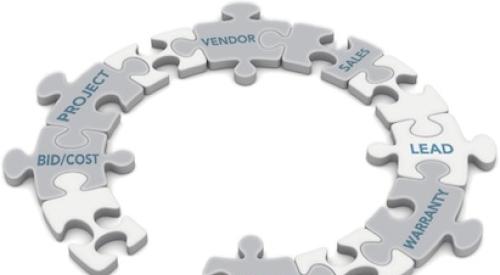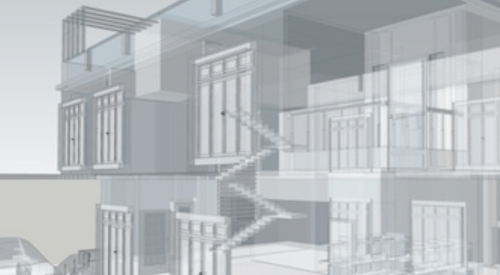In a previous article (“How to Grow Without Adding Staff,” Professional Builder, September 2012), I outlined several ideas that builders can implement to improve profits now. I argued that builders must figure out how to do more with less — fewer people, lower margin, and less time — and adopt modern, integrated systems that can enable them to accomplish more with less. Yet builders have historically not used systems well, and mostly for good reason: because most systems are bad.
I’m happy to report that good systems do exist — systems that are integrated, that don’t require technology to be purchased or managed, and are very affordable.
Rules to keep in mind include:
• Get rid of the computers, data centers, servers, and the like. Use cloud-based systems. Trade high cost, high maintenance, and low performance for high value and low cost. Get more for less.
• Use fully integrated systems. No gaps. No entering data more than once.
• Don’t over-complicate the systems. Only input the data you can use. Don’t let systems cripple your business and how you want to operate. They should do the opposite.
My article caused many of your peers to ask for more detail on this idea. People wanted to discuss why they have failed to implement good systems and what they can do about it.
Why systems fail
Why do systems take many months if not years to implement? Why is it so difficult to make them work across an organization? Why is it so difficult to make them work across different systems or functions? Why do these projects make you feel like you have entered a maze and can’t get out?
There are two major reasons. First off, new systems offer infinite choice. This means that all systems, even the best of them, typically start with, “What would you like the system to do?” questions. Consultants are trained to ask those questions of their clients. And therein lies the rub. People know their jobs really well. But they don’t necessarily know how to tell a computer how to support them. For example, information can be coded and stored many different ways. What is the best way? Salespeople need things a certain way, but that way may not work well for purchasing or for customer service and warranty. What is the best workflow? What is the best way to represent the information and code the data? Again, many different choices are possible. This can be hard and very intimidating. And trying to figure all of this out when there is a business to run is a recipe for systems implementation failure.
The second reason is that most systems are not integrated. That means one system doesn’t “talk” to another. Data has to be re-keyed at best, or worse, it doesn’t flow across the organization at all.
Fortunately, there is a solution. You can implement a single, fully integrated system that crosses the entire organization. Business is up and running and successful in the matter of weeks and months, not years.
How? First, think through the entire process, then implement. Study your business processes from lead management, contract generation, option selection, bidding and contracting, project management, and scheduling, all the way through customer service and warranty. From this research, develop a series of best practices that will be used to develop all of the coding structures and workflows necessary to create a streamlined and efficient operation. Use this information to set up your new system with a single division or project from sales and construction to purchasing and customer service.
The builder goes from being asked, “How do you want this system to work?” to “How can we make these best practices and systems work as they exist?” The builder goes from looking at a blank screen and blank faces to a screen full of the company’s own information so they can see exactly how things will work and what changes need to be made. Sometimes these changes are made to your processes. Sometimes the system is adjusted. Either way, it is much faster to start from something than from nothing.
The best part of all, however, is that everyone in a builder’s organization, from sales to construction to warranty, is always looking at the same information at all times. That is an amazing thing.
There’s also a shortcut if you want one. We have conducted extensive research and have outlined the best practices, coding structure, starting templates, and implementation plan that builders can use as a starting point to what we call a FastPath implementation. We can review this template with you and demonstrate what a fully integrated system actually looks like. FastPath allows a builder to focus on learning new systems instead of figuring out how to set up systems and performing a lot of data entry.
Avoid overcomplicating the processes and systems
Too often, builders want to put information into their systems that will have little future use. Take cabinets. You could specify every door style, species of wood, layout option, and configuration choice for every model, ending up with a long list of combinations that may never be selected. Yet they all have to be entered if you want the system to be able to configure the cabinet choices in the home. Or, you can keep all of that detail and complexity out of your system and link it to the systems of the cabinet contractor who has specialized software to manage such detail. What could have been thousands of lines of combinations and choices is reduced to a single line called “Kitchen Cabinets.”
Still want the detail? The document from the cabinet company specifying the cabinet selections can be digitally attached to the records of the home to retain all of this detail without any of the excruciating work to create and manage it. Take plumbing fixtures. You could list choices by brands, models, and pricing set accordingly. Or you could have a line item called “Master Bath Faucets and Fixtures.” Again, the details of the choices can be in a separate document that is easy to maintain and update. If you want to change brands or models, it takes only an instant. The choices will still be recorded and attached to the home’s records. No details are lost, and no extra work is created.
I can’t tell you how many builders won’t change something as simple as a faucet because it will take hours upon hours to update their systems with the change. It’s a complete waste of time. Common sense has to rule. Can you put all of that detail into the systems? Yes. What will you do with it? Nothing. So why do it in the first place?
Integrated systems
Integrated systems available from anywhere at any time allow builders and their subcontractors to see the same information simultaneously. All puzzle pieces are connected and the loop is closed. There is only one version of the truth. No time is wasted entering information from one system to the next. No time is wasted searching for information one group has and the other doesn’t. Tremendous efficiency becomes possible. Errors are minimized.
Conclusion
Selecting systems is not hard. There are many good choices. However, getting them fully implemented and adopted across an organization is a challenge. But it doesn’t have to be. Ask your systems vendor to tell you what they would do and use that as a starting point. Modify your practices where possible, but not the systems. It will be easier for them and for you.
Builders are unique by where they build, the product they build, their service approach, and the like. But they’re not very different in the work that they do. This is an area of the business where trying to be more like everyone else is a good thing.
Charles P. Schneider is the founder and CEO of Builder Sourcing Corporation, a professional services firm that works with home builders to improve their results in purchasing and the use of advanced builder management systems. For more information on these and other ideas for improving your business, visit www.BuilderSourcing.com or email cschneider@buildersourcing.com.












